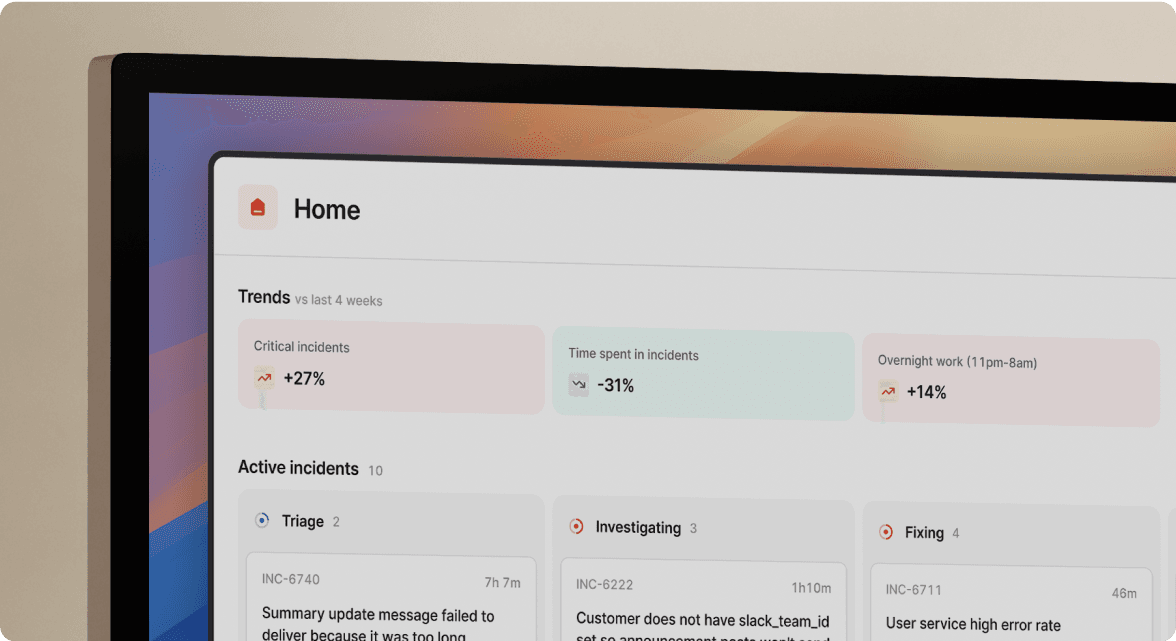The price of building your own incident management tool is not what it seems.

Build or buy?
An age-old decision that gets made dozens of times a year. It’s quite possibly one of the most important decisions you make as an company. It impacts roadmaps, productivity, team structure, and customer satisfaction (you know, just a few little things).
There are a lot of factors to consider, one of the most prominent being cost.
So, what exactly are the costs you need to consider when building your own incident management solution?
The team and time
First and foremost, you’ll need a development team to bring your incident management solution to life. You need to think about engineering time and salary, but don’t forget about designers and product managers too, all of whom are needed for the initial build.
As you calculate these numbers, you’ll also want to consider how much time your team can allocate from their product roadmap for this endeavor. Once you’ve identified the resources, don’t forget that planning, development, hosting and deployment all take time — and then there is always the estimation to reality factor 😅.
The platform
It’s a no brainer, but essential: your incident management platform needs to work during any product or service downtime. To do this, you’ll want to invest in a separate hosting infrastructure platform (which comes with added costs).
If you can get behind paying for another hosting platform, keep in mind, it’s not just an extra annual fee. There also needs to be commitment from your team in terms of time and effort. Your team likely has a rigorous deployment process with your existing hosting platform, and implementing a new production path can be an undertaking in terms of time and effort from your team.
The data and security
Your engineering team is full of all-stars, but even the best engineers aren’t experts in everything. When it comes to incident management, security and data processing are both critical, especially when it comes to handling customer data.
You need to make sure your team has the expertise to build features like authentication, authorization, and restricted data access, etc. to ensure any incident data is safe. If you don’t already an engineer (or engineers) engineers who can focus on this, you’ll need to invest in them. You can off course outsource for that role in particular, but we’re all too familiar with the potential challenges that can arise from taking that route (from evaluating the vendor to determining how much time they can dedicate to you, etc.).
The maintenance and upgrades
Software requires on-going maintenance. At the very least, if you’re striving for building a “good” incident management tool, you’ll need to make sure teams are available for regular upkeep to address bugs, vulnerabilities, etc. If you’re aiming for a “fantastic” solution, teams will need to dedicate time for innovation and adding new features.
The conclusion
So, do you build or do you buy?
You are not the first, and you will certainly not be the last organization to be asking yourself this question.
We’ve spoken to now customers who walked down the same road you are walking down now, and with their help, have crafted a calculator to help paint a clearer picture of what it would actually cost to build your own solution.
See related articles
So good, you’ll break things on purpose
Ready for modern incident management? Book a call with one of our experts today.

We’d love to talk to you about
- All-in-one incident management
- Our unmatched speed of deployment
- Why we’re loved by users and easily adopted
- How we work for the whole organization



